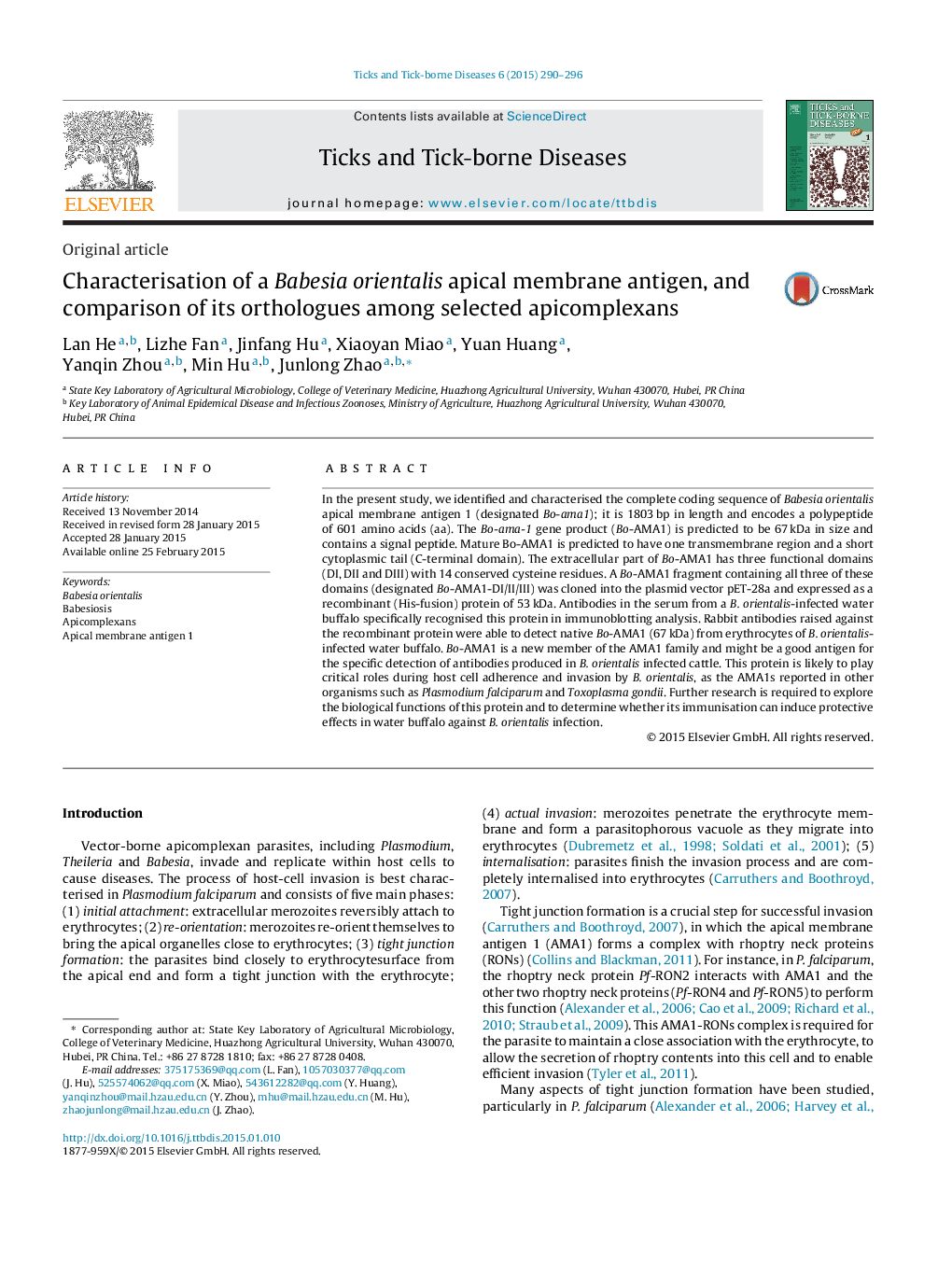| Article ID | Journal | Published Year | Pages | File Type |
|---|---|---|---|---|
| 2473925 | Ticks and Tick-borne Diseases | 2015 | 7 Pages |
In the present study, we identified and characterised the complete coding sequence of Babesia orientalis apical membrane antigen 1 (designated Bo-ama1); it is 1803 bp in length and encodes a polypeptide of 601 amino acids (aa). The Bo-ama-1 gene product (Bo-AMA1) is predicted to be 67 kDa in size and contains a signal peptide. Mature Bo-AMA1 is predicted to have one transmembrane region and a short cytoplasmic tail (C-terminal domain). The extracellular part of Bo-AMA1 has three functional domains (DI, DII and DIII) with 14 conserved cysteine residues. A Bo-AMA1 fragment containing all three of these domains (designated Bo-AMA1-DI/II/III) was cloned into the plasmid vector pET-28a and expressed as a recombinant (His-fusion) protein of 53 kDa. Antibodies in the serum from a B. orientalis-infected water buffalo specifically recognised this protein in immunoblotting analysis. Rabbit antibodies raised against the recombinant protein were able to detect native Bo-AMA1 (67 kDa) from erythrocytes of B. orientalis-infected water buffalo. Bo-AMA1 is a new member of the AMA1 family and might be a good antigen for the specific detection of antibodies produced in B. orientalis infected cattle. This protein is likely to play critical roles during host cell adherence and invasion by B. orientalis, as the AMA1s reported in other organisms such as Plasmodium falciparum and Toxoplasma gondii. Further research is required to explore the biological functions of this protein and to determine whether its immunisation can induce protective effects in water buffalo against B. orientalis infection.
